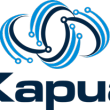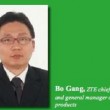

Eurotech, a provider of Machine-to-Machine (M2M) platforms and Internet of Things (IoT) solutions, has announced the availability of the first code contribution for Eclipse Kapua, in collaboration with Red Hat, a provider of open source solutions. (more…)
October 24, 2016
Posted by: Avadhoot Patil

Ian Hughes, an IoT Analyst at 451 Research discusses the complexities faced by software developers in an increasingly fractured technical landscape.
The 1980s programmer/developer
I started programming, self-taught through magazine listings and experimentation in the 1980’s, at home on a ZX81, later at school and university. Companies hired and trained programmers, based on small sets of preferred languages, COBOL, PL/1 and C. Design methodologies evolved to try and allow for specification of software projects at a higher architectural level. User interfaces were few and far between, mostly created in panel editors left for junior developers to put onto the green screen monitors.
The 1990s programmer/developer
We saw a drive towards object orientated languages and event processing systems. Legacy languages were still needed but Smalltalk and C++, with their added engineering rigor, became fashionable in the mid 90’s. The desktop personal computer arrived and started to bring windowed systems, richer user interfaces, which divided the profession into ‘client’ or ‘server’ developers. Programmers were still programmers though, learning the methodologies of Rumbaugh, Booch, Jacobson et al. Engineering relied on more frameworks, middleware and class libraries.
The 2000s programmer/developer
The web disrupted the programming industry status quo. Firstly, with a new set of protocols, markup languages, browser plugins and server interactions and the number of potential users ramped up from hundreds to millions. Very little tool support existed to deal with how to present a Web page, the interactions on it or connecting to a backend. The user interfaces became critical, they provided a brand touchpoint, required graphic and audio design skills, information design and blending with the traditional technical side of projects. Secondly the Web provided a vehicle for many more people to engage with software engineering and to share ideas. The magazine listings of my youth were now amplified as living projects with open source collaborations enabling lots and lots of projects, prerequisites and constant change.
The 2010s programmer/developer
The wild west of the web gradually started to be tamed and engineering rigor returned with the advent of cloud hosting. Companies not looking for programmers but for Full Stack developers. People who know a little about a lot of parts. The Full Stack trend began with the Web, needing to know HTML, CSS, PHP, Java, JavaScript, HTTP protocols, MySQL/ NoSQL etc. combined with library management systems, security requirements, testing and also be able to create for mobile platforms, touch interfaces and hooking up to Facebook, Twitter and any other social media platform. Agile development added yet more things to be expert in. Forever patching runtimes bringing its own challenges too, no more launch and forget.
Today’s programmer/developer
The Internet of Things (IoT) is making that Full Stack a lot higher and more difficult to balance. IoT brings physical computing to the mix. If any developer thinks users mess up their wonderful pristine development, wait until devices being impacted by temperature, sunlight, atmospheric conditions and water start delivering constant streams of data across a multitude of communication mechanisms to server-less computing based cloud processes. Each of the millions of devices or products are remote, together they provide a large attack surface for hacker intrusion. Early IoT was about simple sensors and actuators, now IoT end points are rich compute platforms too, they connect to larger edge servers that collate and gather data for the backhaul to a cloud server. Understanding what function needs to be deployed where, in a complex distributed feedback loop, is difficult. Developers have to consider the new system components such as machine learning and self-organising interactions of Blockchain between devices. User interfaces alter dramatically with Virtual and Augmented Reality (VR & AR) and new types of device to interact with. Organisational silos are crossed as data from one IoT system feeds an Artificial Intelligence (AI) from another. Operation Technology departments start to cross over with Information Technology groups. IoT blurs many boundaries.
Future programmers/developers
At 451 Research we cover and keep up with the multitude platforms and protocols that make up the IoT industry. There is an industry gap for methodologies, and then design tools, to evolve with common patterns and use cases. Starter kits of hardware with backend connections are common appealing to Full Stack developers in the enterprise. Proof of concepts rush to plug things in, which is the IoT expression of the Minimal Viable Product.
It may sound all doom, gloom and scarily confusing, but as I tell the next generation when I give talks, there is huge opportunity to flourish and build on the skills and aspirations they have. Full Stack is an appreciation of breadth and a willingness to go with the flow, to adapt. IoT is a great enabler for those who may not be equipped to be a traditional programmer. Equally those with that skill can find intricate niches and create wonderful things.
September 5, 2016
Posted by: George Malim

ZTE Corporation, an international provider of telecommunications, enterprise and consumer technology solutions for the mobile internet, announced the successful completion of phase-1 tests of key 5G wireless technologies as part of China’s 5G testing. (more…)
September 1, 2016
Posted by: Avadhoot Patil

The Internet of Things (IoT) could have profound implications on our everyday lives – including our everyday safety – but there needs to be much greater collaboration between vendors, partners and customers to make it a reality, writes Dermot O’Connell, the executive director and general manager for OEM Solutions at Dell EMEA. (more…)
August 5, 2016
Posted by: George Malim

The Internet of Things (IoT) is booming. Research released by Gartner suggests that the number of connected things will grow by 30% to 6.4 billion in the next 12 months – at a rate of 5.5 million per day. If there was any doubt that IoT is merely a product of overblown hype and speculation, this is certainly changing. 2016 is the year that IoT means business, writes Mike Laven, the chief executive of Currency Cloud. (more…)
June 23, 2016
Posted by: George Malim

Everyone is talking about the Internet of Things. Connected devices are gaining momentum in homes, businesses and public service infrastructure. These devices are not only creating new possibilities for how we work and communicate but fundamentally transforming every aspect of life, from automated drug administration devices to traffic lights and air sensors in buildings, writes Paul German, the vice president EMEA of Certes Networks. (more…)
May 27, 2016
Posted by: George Malim

The largest ant colonies in the world contain over 300 million individuals and cover areas that are several kilometres wide. Ants mostly rely on tactile and chemical means of communication to keep these huge systems in order. Luckily, as humans, we have additional tools at our disposal to make our homes and cities more efficient, more organised and, to put it simply, better places to live in. (more…)
May 13, 2016
Posted by: George Malim

IIoT is already having a significant impact on industrial performance in two primary areas: asset performance management and operator efficiency, writes Dave Sutton, a product marketing manager at Schneider Electric, in the second part of his blog on Industry 4.0 and the Industrial Internet of Things. (more…)
February 12, 2016
Posted by: George Malim

The evolution of smart, connected and autonomous products is reshaping the manufacturing industry and its ecosystem. The convergence of operational technology and information technology is opening a completely new axis, and a large one at that, for creating path breaking innovations and opportunities in the manufacturing ecosystem. (more…)
October 29, 2015
Posted by: Sudip Singh

The FiRa Consortium has announced the release of its Core 4.0 Specifications and Certification Program, notable steps in ultra-wideband (UWB) technology development. These updates complete the work of IEEE 802.15.4-2024 features to fulfill FiRa-defined use cases. They also enhance FiRa’s capabilities, enabling seamless interoperability and unlocking new possibilities for precise and secure ranging and positioning in diverse applications.
December 9, 2025
Posted by: Marion Webber